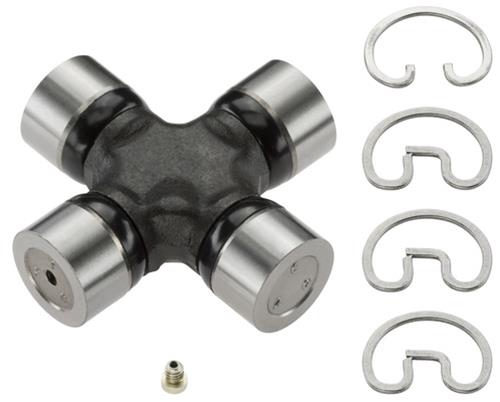7 items not to reuse when restoring your car
Restoring a car is costly, not only in dollars but time. Making the most of both will create a finished product that is much more rewarding. Cut corners a bit too close in the interest of saving a few bucks or a little time and you stand a chance of doing it all over again. To avoid the headache of doing the same job twice, here are seven things you should never reuse in a restoration. We promise you’ll thank us later.
U-joints

Driveshafts and the associated hardware are unsung heroes in the car world. These simple but hard-working pieces transfer the rotational motion from the transmission output shaft to the driveshaft, then on to the pinion gear in the rear axle. They operate in the terrible environment under the car where the sensitive needle bearings can get packed full of grit and debris, stranding you when they break or lock up. If you are going through the effort to restore the car, replace the u-joints while everything is apart. You can’t see them when all is said and done, but peace of mind goes a long way.
Brake lines

This one is about peace of mind, too. Brake lines can look serviceable on the outside, but water suspended in the brake fluid can create rust that works from the inside out. Ruptured brake lines are a scary proposition and shouldn’t be left to chance. Invest in pre-bent lines or bend and flare your own for a custom look and a real sense of satisfaction.
Any spliced wiring

Don’t reinstall that rat’s nest of wiring. Properly splice any poorly-done unions or, better yet, replace wire completely to remove any patches or splices. You don’t have to replace the whole harness, but that’s a good option, too. Electrical items stop working because of improper or broken wiring. Worse, they can short out and ignite. It would be heartbreaking to watch all your hard work burn in an electrical fire the first time you connect the battery. It isn’t worth the relatively small amount of time and money you might save by reusing the old stuff.
Thermostat

Buried in the engine compartment is a small part that, if it fails, can cause no end to overheating headaches until replaced. Draining the cooling system is a pain, and thermostats are cheap. Yes, you can toss the used one in a pot of boiling water to check it, but for the small amount of money, why not just replace it? Do it the first time rather than cursing your tight purse strings the second time.
Pilot bearing/throw-out bearing

Manual transmission cars are typically favored for their ruggedness and ease of repair, but two pieces of a manual transmission system are typically overlooked. The pilot and throw-out bearings keep the input shaft supported and disengage the pressure plate when the driver presses the clutch pedal. If either bearing fails, it can cause lack of clutch engagement or additional damage to the transmission. Replacing them often requires removing the engine, transmission, or both. It is tempting to visually inspect these and put everything back together, especially if there was no noise or signs of failure before disassembly. But do you really want to pull the engine and transmission shortly after your restoration is finished? That’s when you are supposed to be enjoying the drive.
Piston rings

That’s right, I have seen engines go back together with the same piston rings that came out. Tearing down an engine enough to remove pistons and connecting rods, only to put them back without replacing piston rings, is setting up a freshly assembled engine to have excessive blow-by or low compression, which inhibits performance. This is a time when “while-I’m-in-there” syndrome is OK. A “freshly rebuilt” engine with an oil breather like a steam train is not a good look. It is also easily avoided.
Ball joints

Front suspension is an easy rebuild—take it apart, clean it, put it back together. And much like the pilot bearing, ball joints are simple but hard working. Replacing them requires a good bit of disassembly, including compressing coil springs, in most cases. Do these while everything is apart and you won’t have to get a fresh alignment again shortly after you’ve finished that restoration.
Are there pieces we missed? What you would never think of reusing in your restoration? Let us know in the Hagerty Forums below.


